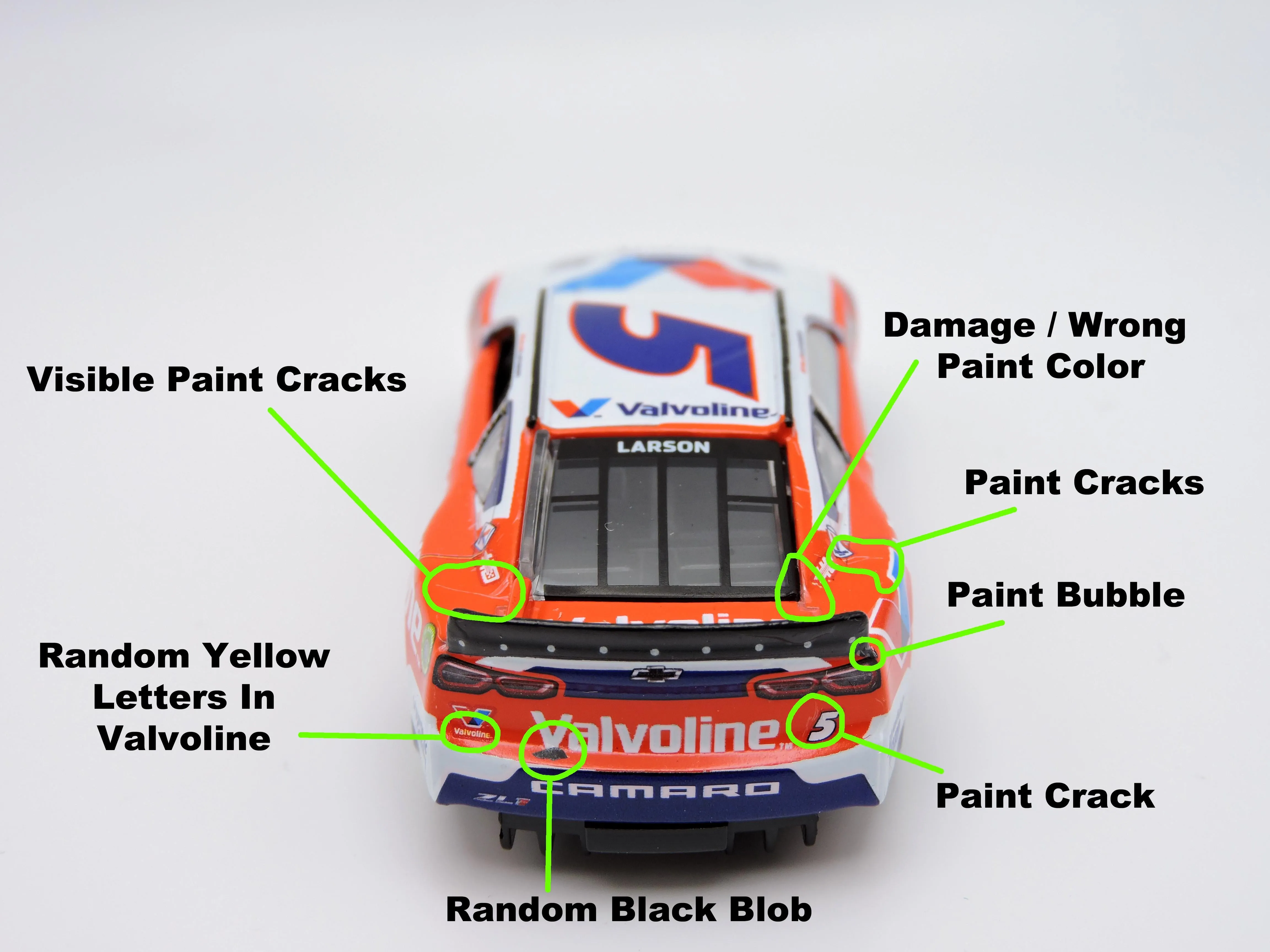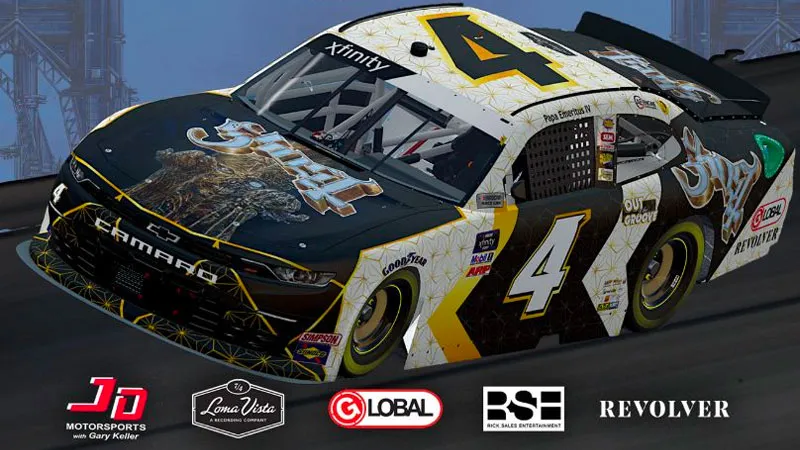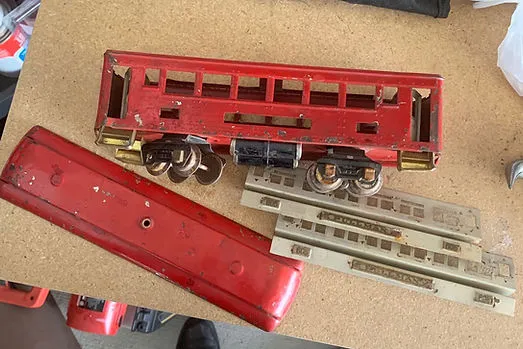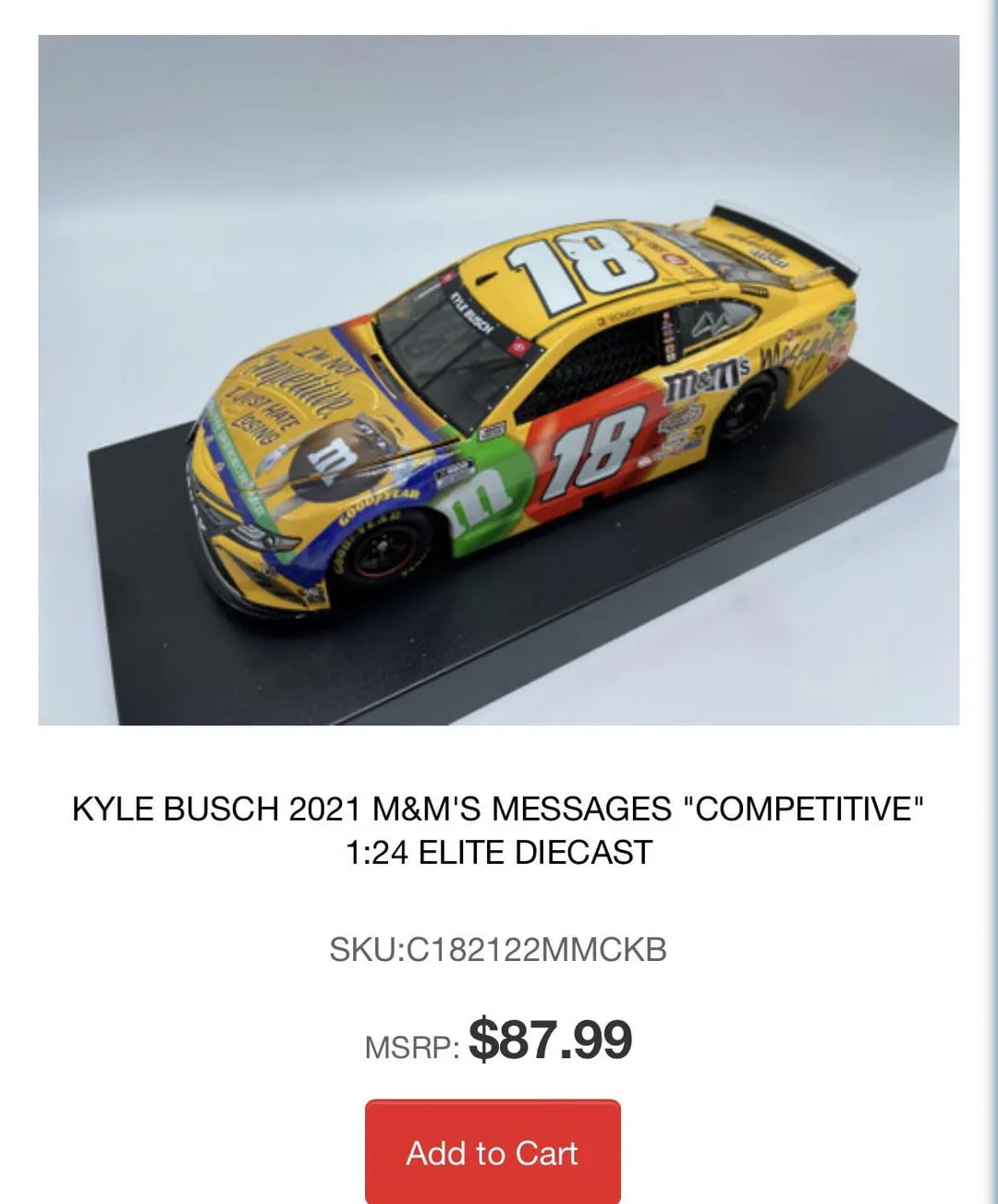Understanding Lionel Diecast Restoration
Lionel diecast restoration is a rewarding hobby that breathes new life into classic model trains, transforming worn and weathered pieces into stunning collectibles. This guide will provide a comprehensive overview, guiding you through the essential steps, techniques, and considerations required to successfully restore Lionel diecast models. Whether you are a seasoned collector looking to refine your skills or a newcomer eager to embark on this exciting journey, this guide offers practical advice, expert tips, and invaluable insights to help you achieve exceptional results. With careful attention to detail and a passion for preserving history, you can revitalize these iconic trains and enjoy the satisfaction of seeing them run once again, celebrating the rich heritage of Lionel and model railroading.
The Allure of Lionel Diecast
The enduring appeal of Lionel diecast models lies in their rich history, intricate designs, and the nostalgic connection they evoke. These trains, originally manufactured during the golden age of model railroading, represent a bygone era of craftsmanship and innovation. Owning and restoring Lionel diecast models offers collectors a unique opportunity to connect with this heritage, preserving a tangible piece of history. The diecast metal construction provides durability, allowing these models to withstand the test of time. The process of restoration allows enthusiasts to appreciate the craftsmanship, understand the mechanics, and feel a sense of accomplishment. The detailed paintwork and authentic features further enhance the collectible value. The combination of historical significance, robust construction, and aesthetic appeal makes Lionel diecast models a cherished and sought-after item for collectors worldwide.
Why Restore Your Lionel Diecast

Restoring Lionel diecast models offers numerous benefits, extending far beyond simply enhancing their appearance. First and foremost, it preserves a piece of history, safeguarding these vintage trains for future generations to enjoy. Restoring also dramatically increases the value of a model, turning a neglected piece into a valuable collectible. Furthermore, the restoration process is an engaging and fulfilling hobby. It provides a sense of accomplishment and allows you to develop valuable skills in craftsmanship, attention to detail, and problem-solving. Many find the meticulous work therapeutic and rewarding. Restoring a Lionel diecast model is a tangible way to reconnect with the past and keep the legacy of this iconic brand alive. It’s a way to celebrate the history, craftsmanship, and enduring appeal of model trains. The joy of seeing a restored model back in action provides immense satisfaction, connecting you with a community of like-minded enthusiasts who share a passion for these classic toys.
Essential Tools and Supplies for Lionel Restoration
Embarking on a Lionel diecast restoration requires a well-equipped workspace and the right tools. A dedicated area, well-lit and ventilated, is crucial. Essential tools include screwdrivers (various sizes and types), pliers, wire cutters, and a hobby knife. For cleaning and surface preparation, gather soft brushes, cotton swabs, and various grades of sandpaper. For rust removal, consider products such as rust dissolvers or electrolysis kits. High-quality paint and detailing brushes are essential for achieving professional-looking results. Additionally, you’ll need paint thinners, masking tape, and possibly an airbrush for applying paint. Protective gear like gloves and eye protection are non-negotiable. A magnifying glass can be incredibly helpful for detailed work. Finally, a good selection of replacement parts, lubricants, and adhesives will be necessary. Investing in quality tools and supplies from the start will significantly improve your restoration experience and the final outcome of your projects. (Image: lionel-diecast-tools)
Cleaning and Disassembly
Cleaning and disassembly are the foundational steps in the restoration process. Begin by carefully inspecting the model, taking detailed photographs to document its original condition and arrangement of parts. Use these photos as a reference during reassembly. Gently clean the exterior of the model using a soft brush and mild soapy water, avoiding harsh chemicals that could damage the paint or delicate components. Once cleaned and dried, begin the disassembly process. Using the appropriate screwdrivers, carefully remove screws, paying close attention to their location, and organizing them to ensure they can be easily replaced later. Take care not to force any parts, as this could lead to damage. As you disassemble, identify any components that are damaged or missing, making a note of them for replacement. The systematic approach to cleaning and disassembly is crucial for a successful restoration. Taking your time, being patient, and meticulously documenting each step will prepare you for the subsequent stages of the process, ensuring a quality result. (Image: lionel-diecast-before-after)
Surface Preparation

Surface preparation is critical for achieving a smooth, professional-looking finish. After disassembly and cleaning, carefully inspect the metal surfaces for any imperfections such as scratches, dents, or rust. Use fine-grit sandpaper to gently remove any remaining paint, rust, or imperfections. Focus on smoothing out the surface, ensuring it is even and free of debris. If there is significant rust, consider using a rust remover, following the manufacturer’s instructions carefully. Once the rust is removed, neutralize the surface to prevent further corrosion. Any remaining imperfections can be addressed with a fine-surface filler. Apply the filler in thin layers, allowing each layer to dry completely before sanding it smooth. Once all imperfections are addressed, clean the model thoroughly to remove dust, grease, or any remaining residue. Proper surface preparation ensures that the paint adheres effectively and that the finished model has a flawless appearance. It’s the foundation for a high-quality, long-lasting restoration that will make your Lionel diecast look its best. (Image: lionel-diecast-rust-removal)
Rust Removal and Prevention
Rust removal and prevention are crucial steps in restoring the integrity and appearance of your Lionel diecast model. Begin by assessing the extent of the rust damage. For light rust, you can often use fine-grit sandpaper or a rust-removing chemical cleaner, carefully following the manufacturer’s instructions. For more severe rust, consider electrolysis, a method that uses an electric current to remove rust from the metal surface. After removing the rust, thoroughly clean and dry the model. Then, apply a rust inhibitor or primer to protect the metal from future corrosion. Applying a rust inhibitor will form a protective barrier, preventing moisture and oxygen from reaching the metal and causing further rust. Proper rust removal and prevention will ensure the longevity of your restored Lionel diecast model. It will safeguard its structural integrity and aesthetic appeal for years to come. Choosing the right method and materials is essential for preserving the value and beauty of your vintage train. (Image: lionel-diecast-rust-removal)
Painting and Detailing Your Lionel Diecast
Painting and detailing are where you bring your Lionel diecast model back to life. Start by selecting the appropriate paint for your model, considering factors like color matching, durability, and the finish. Acrylic paints are often a good choice for ease of use and application. Mask off the areas that shouldn’t be painted, protecting the intricate details. Applying thin, even coats of paint is critical for achieving a professional-looking finish, allowing each coat to dry completely before applying the next. Consider using an airbrush for a smooth, consistent paint job, but spray cans or brushes also work. Once the base coat is dry, you can begin the detailing process. This involves adding finer details such as stripes, logos, and lettering. Use a magnifying glass and fine-tipped brushes to meticulously recreate these details. Apply decals, if necessary, and then protect your work with a clear topcoat. This clear coat will protect the paint from scratches and fading. The painting and detailing stage is a true test of patience and skill. It is the culmination of your efforts, transforming a worn piece into a striking representation of the original design. (Image: lionel-diecast-painting)
Choosing the Right Paint

Choosing the right paint is pivotal for a successful Lionel diecast restoration. There are several paint types to consider. Enamel paints are durable and offer a traditional finish, but they take longer to dry and require proper ventilation. Acrylic paints are a popular choice because they dry quickly, are easy to clean up with water, and offer a wide range of colors. Lacquer paints dry very fast and provide a hard, glossy finish. Regardless of the paint type, consider the following factors. The color of the paint should match the original finish as closely as possible. Consider the finish – matte, satin, or gloss – to match the original appearance. Durability is crucial as the model will be handled frequently. The paint should be resistant to chipping, fading, and wear. Ease of application is essential for beginners. Consider the painting method you will use, such as brushing, spraying, or airbrushing, and select paint that is compatible with your chosen method. Researching the original paint used for your model, or consulting with experienced restorers, can provide valuable insights. Choosing the right paint will ensure a visually stunning and enduring finish for your Lionel diecast model.
Painting Techniques
Mastering painting techniques is key to achieving professional-looking results. If using a brush, apply thin, even coats, brushing in one direction. Allow each coat to dry completely before applying the next, this minimizes brush strokes and ensures even coverage. If using spray cans or an airbrush, maintain a consistent distance from the model and use smooth, even strokes. Overlapping each stroke slightly ensures complete coverage. For intricate details, use fine-tipped brushes and a magnifying glass. Practice on a test piece before painting your model. This will help you develop your technique and avoid costly mistakes. Masking is essential for creating clean lines and separating colors. Use high-quality masking tape to carefully cover areas you don’t want to paint. Remove the tape gently after each coat is dry to avoid pulling the paint. The key is patience and attention to detail. Take your time, and don’t rush the process. The more careful you are with your painting techniques, the better the finished result will be. This will help you create a stunning and authentic restoration. (Image: lionel-diecast-painting)
Reassembly and Final Touches
Reassembly is the culmination of your restoration efforts, bringing your Lionel diecast back to its original form. Before reassembling, inspect all parts and clean them thoroughly. Refer to the photos and notes you made during disassembly to ensure accurate reconstruction. Carefully fit the components back together, using the correct screws and hardware. Don’t force anything. If a part doesn’t fit, double-check its placement or alignment. Lubricate moving parts with a suitable oil or grease. This will help ensure smooth operation. Once the model is reassembled, check for any loose screws or improperly connected parts. Inspect the paint finish for imperfections and touch up as needed. Apply decals, if applicable, and seal them with a clear coat for protection. Ensure the model runs smoothly, with all wheels turning correctly. At this stage, you can add any missing details or finishing touches, such as new lights or accessories. Reassembly is a satisfying part of the process, bringing all the steps together. It is also your final opportunity to ensure that everything fits together. (Image: lionel-diecast-reassembly)
Final Inspection

A final inspection is crucial before declaring your restoration complete. Examine the model from every angle, looking for any imperfections, inconsistencies, or areas that need further attention. Check the paint finish for any runs, drips, or unevenness. Ensure that all the details, such as stripes, logos, and lettering, are accurate and crisp. Test the functionality of the model. Make sure that the wheels turn smoothly, that the lights work (if applicable), and that the train runs properly on the track. Verify all the screws and other hardware are secure. Check for any loose parts or components. If you are satisfied with the overall appearance and functionality, congratulate yourself on a job well done. The final inspection is the last chance to correct any mistakes and ensure the model is in excellent condition. It is the final step in the process and will ultimately determine the quality and value of your restoration. A thorough final inspection ensures the final product is something to be proud of.
Where to Find Replacement Parts
Finding the correct replacement parts is crucial for a successful restoration. Lionel enthusiasts have various sources to find these essential components. Online retailers, such as eBay and dedicated model train supply stores, are excellent sources. These platforms offer a vast selection of new and used parts. Local model train shops are valuable resources, offering parts and expert advice. Swap meets and model train shows are great places to find rare and hard-to-find components. Specialist Lionel part suppliers offer a wide variety of replacement parts, often specializing in specific model years. When searching for parts, have the model number and year of manufacture ready, as this will help to ensure the parts fit your model. Inspect the parts carefully, paying attention to their condition. Consider whether you prefer new or used parts. The quality of replacement parts is key to the success of your restoration. Taking the time to research and find the right parts will guarantee an authentic and reliable restoration. (Image: lionel-diecast-parts)
Displaying Your Restored Lionel Diecast
Once you have restored your Lionel diecast model, it’s time to showcase your work. Consider a variety of display options, like a dedicated display case, protecting the model from dust and damage while highlighting its beauty. Build a custom diorama. Create a miniature scene that complements your model, adding a touch of realism. Display your models on shelves, with the trains spaced out to allow them to stand out. Use lighting. Well-placed lights can accentuate the details of your models. Place the model on a layout, which enhances the visual presentation and gives your display context. Rotate your displays. This ensures that you can enjoy them and change your collection. By considering these different display options, you can create an engaging and attractive display that will enhance the appreciation of your restored Lionel diecast models. Properly displaying your restored model is an opportunity to show off your skill. (Image: lionel-diecast-display)
Preserving Your Collection

Preserving your collection is essential to protect your investment and enjoy your models for years to come. Store your models in a cool, dry place away from direct sunlight. Avoid extreme temperatures and humidity, as these can damage the paint, metal, and plastic components. Use display cases or protective covers to shield your models from dust and debris. Handle your models carefully, and avoid touching the painted surfaces. Regular cleaning and maintenance can keep your models in pristine condition. Consider using a soft cloth to wipe away dust and dirt. Avoid using harsh chemicals or abrasive cleaners, which can damage the paint. Lubricate moving parts regularly to ensure smooth operation. Document your collection, including model numbers, years of manufacture, and any restoration work you have completed. Keeping records can help you track your collection and ensure you keep it in good condition. Taking the time to preserve your collection will allow you to enjoy your restored models, preserving their value and beauty for generations. (Image: lionel-diecast-collection)
